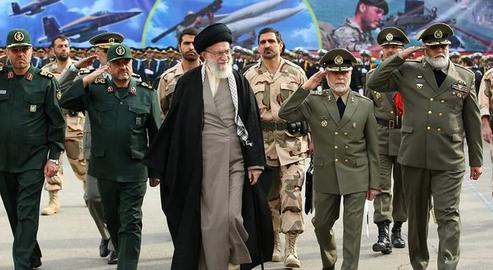In a bold escalation of the recent conflict between Iran and the United States, Tehran has reportedly given information on the targeted and destroyed critical U.S. military communications structure at Al Udeid Air Base in Qatar. Satellite imagery released in the aftermath shows significant damage to a geodesic radome that housed sensitive communications equipment.
Iran on Friday shared a video claiming it had targeted and destroyed a key US communications facility in Qatar during last month’s conflict between Israel and Iran.
The Iranian embassy in India posted the video on X and said, “Satellite images show that #Iran has taken out the US military’s primary Communications Radome in Qatar. The second Radome is located in Kuwait.”
Target: U.S. Communication Hub
The radome, a distinctive white dome protecting a $15 million Modernized Enterprise Terminal (MET), is believed to have been the primary target of Iran’s missile barrage on June 23. Satellite images captured by Planet Labs and Satellogic on June 24 and 25 confirm the structure was obliterated—its signature round silhouette reduced to a charred, flattened area.
Iran’s Islamic Revolutionary Guard Corps (IRGC) took credit for the strike, stating that the missile operation was intended to “cut U.S. regional communications” as a show of force following American airstrikes on Iranian nuclear facilities earlier that week.
According to U.S. defense sources, between six and fourteen ballistic missiles were launched toward Al Udeid Air Base—the largest U.S. military installation in the Middle East. Thanks to early intelligence and prior warnings, most personnel and aircraft were relocated ahead of time. As a result, no casualties were reported.
Qatari and U.S. Patriot missile defense systems successfully intercepted several projectiles, with only the radome suffering visible damage. No other major assets or infrastructure at the base were impacted, suggesting that the strike was narrowly calibrated to deliver a specific blow rather than widespread destruction.
Satellite Confirmation of Strikes
Imagery analysis published by regional defense analysts confirms that the radome was directly hit. Previously circular and prominent in shape, the structure now appears as a scorched black zone amid the otherwise untouched base.
“This was a highly precise strike,” said one intelligence analyst quoted by Iran International. “Iran clearly intended to demonstrate capability without provoking mass retaliation.”
The strike has triggered mixed reactions from the international community:
Iranian officials hailed the operation as a “destructive and powerful missile attack” that successfully disrupted U.S. command capabilities.
President Donald Trump, downplayed the damage, calling the strike “weak” and “largely intercepted.”
Qatari authorities condemned the missile strike as a violation of their sovereignty but praised the swift defense response that prevented greater escalation.
Analysts believe the strike was choreographed to avoid casualties and maintain diplomatic pressure while enabling Iran to target specific high profile facilities.
Implications for U.S. Operations
While the loss of the MET radome may have long-term operational consequences, it also serves as a warning of vulnerabilities in U.S. regional infrastructure. The radome was critical for secure communications across U.S. Central Command’s area of responsibility.
The timing of the strike—occurring just days before a U.S.-brokered ceasefire between Israel and Iran-backed militias—has also raised speculation about Tehran’s broader strategic aims. Some analysts suggest the attack may have served as a final warning shot before temporary de-escalation.
The strike on Al Udeid Air Base underscores a shift in Iran’s military posture—less covert, more direct, yet still calculated. With satellite imagery confirming the damage and both nations avoiding further escalation for now, the attack reflects a glimpse of Iran’s intention and capabilities.
